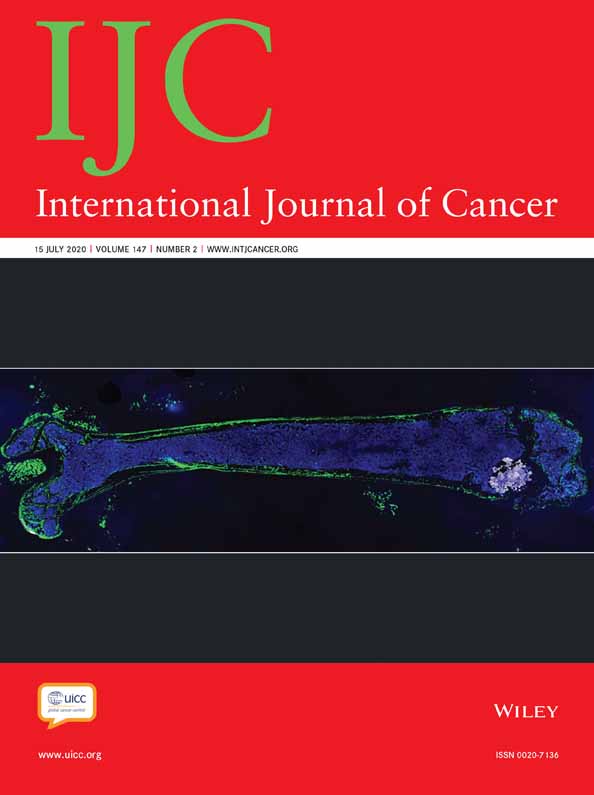Breast cancer by migrant background in Belgium: Lower risk, but worse survival in women of non-European origin
Abstract
Foreign and native populations differ in terms of breast cancer outcomes. Studies rarely distinguish between premenopausal and postmenopausal breast cancer, although the risk profile is different; nor between migrants of the first and second generation (FG and SG), which is crucial to examine genetic and environmental influences on breast cancer. This research fills these gaps by investigating patterns in breast cancer incidence and survival in different migrant groups by menopausal and migrant generational status, taking various risk factors into account. To this end, individually linked data from the 2001 census, the Belgian Cancer Registry and the Crossroads Bank for Social Security are used. Age-standardised incidence rates and incidence rate ratios are calculated by migrant background group, stratified according to ages 30–50 (premenopausal) and 50–70 (postmenopausal). Incidence rate ratios are examined with and without taking reproductive factors and socioeconomic position (SEP) into account. Relative survival percentages and relative excess risks of dying among premenopausal and postmenopausal patients are computed with and without controlling for the stage at diagnosis and SEP. Premenopausal breast cancer is further examined by migrant generational status. Breast cancer incidence is lower among non-European migrants compared to Belgians. Keeping SEP and known risk factors constant reduces much, but not all of the observed discrepancies. A risk convergence between SG migrants and Belgians for the development of premenopausal breast cancer is observed. Premenopausal breast cancer survival is worse among Moroccan patients due to a higher stage at diagnosis. This disadvantage is concentrated in the FG.
Abstract
What's new?
Foreign and native populations differ in terms of breast cancer outcomes. However, studies rarely distinguish between migrants of the first and second generation, which could shed light on the genetic and environmental factors influencing breast cancer. This research fills the gap by investigating patterns in breast cancer incidence and survival in different groups by migrant generational and menopausal status. Breast cancer incidence was lower among non-European migrants compared to Belgians. Accounting for socioeconomic position and known risk factors partly reduced the observed discrepancies. A risk convergence between second-generation migrants and Belgians for the development of premenopausal breast cancer was observed.




